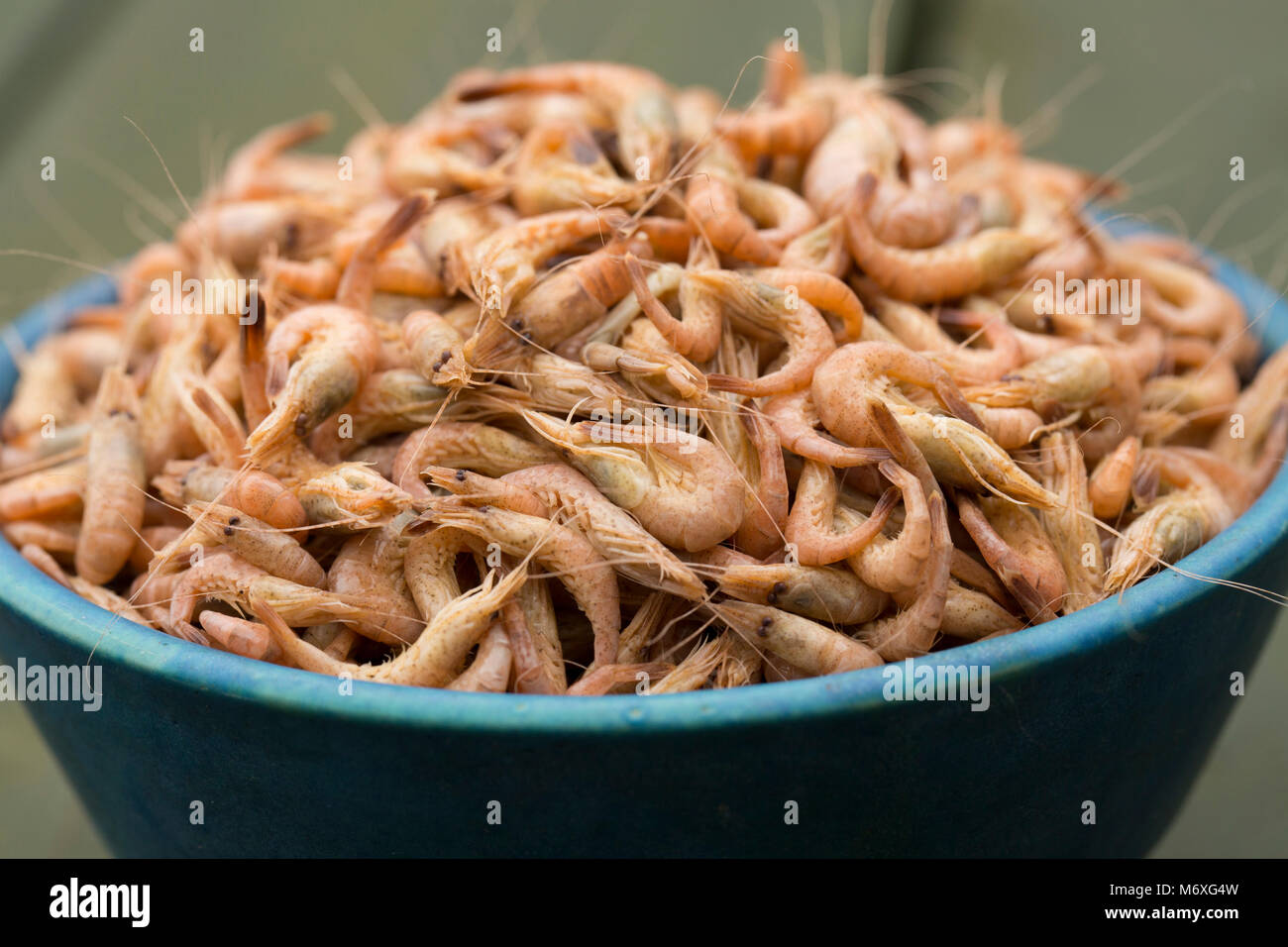As a seafood lover, I’m always eager to expand my horizons and try new varieties Recently, I’ve become intrigued by bay shrimp, which seem to be growing in popularity yet remain a bit mysterious What exactly are bay shrimp? How do they differ from other shrimp? And what are the best ways to enjoy their delicate sweetness? I did some digging to uncover everything there is to know about these tiny shellfish.
Bay shrimp, also called pink shrimp or salad shrimp, are a species of small, sweet shrimp harvested from estuaries and bays along the Pacific West Coast of the United States. They are most abundantly found from Washington state down to Southern California.
Some key facts about bay shrimp:
-
They are typically under 3 inches long when harvested, classifying them as a small variety of shrimp.
-
They have a light pinkish hue that gives them their nickname “pink shrimp.”
-
They are mild in flavor with a delicate, slightly briny sweetness.
-
Bay shrimp have tender, succulent meat that lends well to being eaten cooked or raw.
-
They are sustainably wild-caught using small trawl nets that minimize environmental impact
How Bay Shrimp Compare to Other Popular Shrimp
Though they resemble miniature versions of larger shrimp, bay shrimp have some unique qualities that distinguish them:
Size Bay shrimp are much smaller than varieties like tiger shrimp or prawns, maxing out around 2-3 inches long. Their petite size makes them perfect for salads skewers and pasta.
Flavor: Bay shrimp have a light sweetness compared to the bolder, brinier taste of large shrimp. Their mild flavor allows them to complement without overpowering.
Texture: The tender, smooth meat of bay shrimp has a soft bite that almost melts in your mouth. Larger shrimp often have a firmer, snappier chew.
Cost: Bay shrimp tend to cost less per pound than jumbo shrimp, making them an affordable option. Their small size also allows you to stretch a pound further.
Sustainability: Bay shrimp fisheries are well-managed and use responsible catching methods, earning them a “Best Choice” sustainability rating.
The Many Uses for Bay Shrimp
The versatility of bay shrimp is one of their greatest assets. Their universally appealing flavor and texture make them suitable for nearly any cooking application.
-
Salads: Toss bay shrimp in green, pasta, grain or fruit salads for a protein boost. Their small size prevents them from weighing down delicate greens.
-
Appetizers: Bay shrimp shine in shrimp cocktails and dips where their sweetness can shine through. Bread or stuff them for an impressive presentation.
-
Sandwiches: Pile bay shrimp onto rolls, subs, or wraps to add hearty substance. Their flavor complements both cold and hot sandwiches.
-
Pasta: For a simple yet elegant pasta dish, simmer bay shrimp in vodka, garlic butter, or white wine sauce and mix with linguine or angel hair.
-
Seafood medleys: Combine bay shrimp with scallops, mussels, crab, and white fish for flavorful mixed seafood dishes like paella or cioppino stew.
-
Stir fries: Quickly sauté bay shrimp with seasonal veggies and serve over rice for a fast, healthy, and delicious weeknight dinner.
-
Soups & stews: Add a burst of sweet seafood flavor by stirring bay shrimp into chowders, bisques, gumbos, and more. They hold up well to longer cooking times.
Tips for Selecting and Cooking Bay Shrimp
To enjoy bay shrimp at their freshest and most flavorful, here are some helpful tips:
-
Look for plump, firm, and translucent shrimp with no dark spots or yellowing. Avoid any with a strong fishy or ammonia odor.
-
For maximum freshness, use raw bay shrimp within 1-2 days of purchase. Frozen and thawed shrimp will keep for 3-4 days.
-
Pat shrimp dry before cooking to prevent steaming instead of browning.
-
Don’t overcook bay shrimp or they can become rubbery. Cook just until opaque throughout, about 1-2 minutes.
-
Impart extra flavor by marinating raw shrimp in oil, herbs, citrus, and spices before cooking.
-
For a quick sauce, simmer shrimp in garlic butter, wine, or Worcestershire for the last minute of cooking.
Exploring the Health Benefits
Beyond their culinary virtues, bay shrimp also offer noteworthy health benefits. They are an excellent source of lean protein, providing about 18g protein per 3 ounce serving. Bay shrimp are also low in fat and calories, containing just over 100 calories in a 3 ounce portion.
Additionally, they deliver important vitamins and minerals like vitamin B12, selenium, phosphorus, and iron. The omega-3 fatty acids in bay shrimp support heart health by reducing inflammation. Their high antioxidant content helps fight cell damage caused by free radicals.
Satisfying That Bay Shrimp Craving

Enjoy the Delights of Bay Shrimp
Although some people like seafood more than others, bay shrimp are a great option for anyone who wants to try something new. They are great for seafood lovers because they taste sweet, are tender, and can be used in many different ways in the kitchen. The next time you’re in the seafood section, don’t miss these small but powerful crustaceans. Give bay shrimp a try and enjoy the delicious experience! Have a question or comment about bay shrimp?
Buying and Storing Bay Shrimp
When purchasing bay shrimp, look for those that are firm, translucent, and have a mild, fresh aroma. If buying pre-cooked shrimp, ensure that they are properly refrigerated. When you get them home, put them in the fridge’s coldest drawer and eat them within a day or two for the best taste and quality.
